13 Portuguese Beach Towns for Your Holiday
Written by Nadia Podrabinek
Hello, my name is Nadia. I usually write about traveling (there are so many places to fit all the lifestyles), relocation, and living in a foreign country (adapting to a different culture). My travels stretch beyond Spain, with journeys to the US, Italy, Norway, Portugal, and France. Relocating to Spain in 2018, I lived in cities from Barcelona to Madrid, currently calling Valencia home. Follow me on Twitter, Facebook, Instagram, or LinkedIn! ... show more
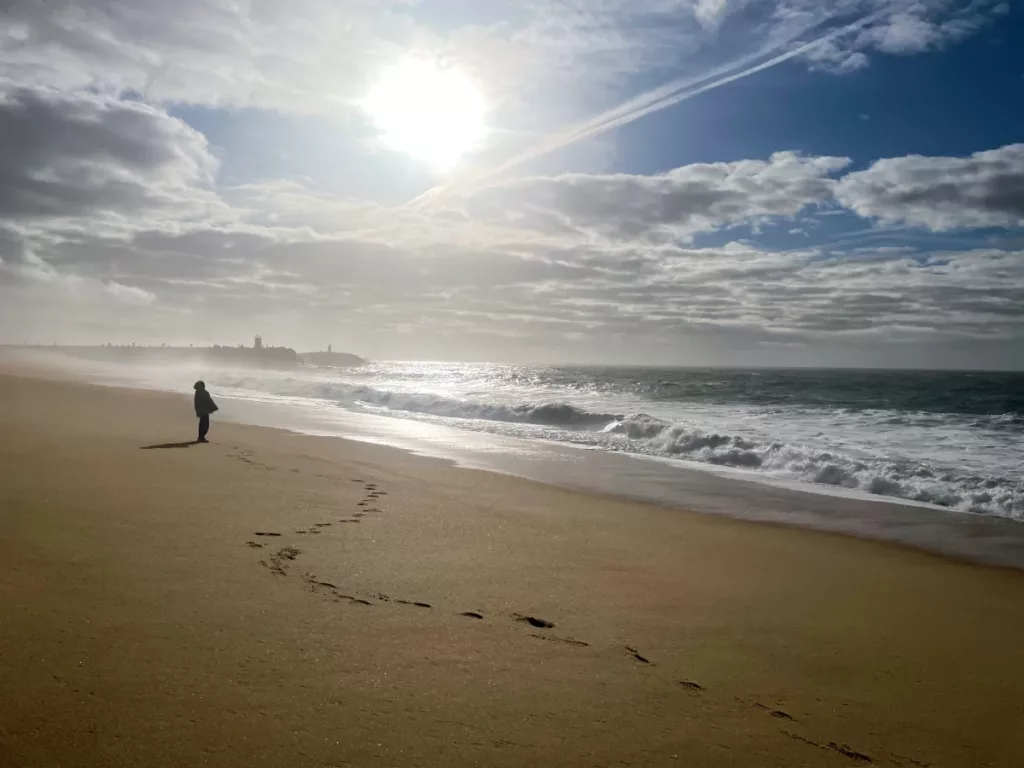
Portugal is a slow-paced, sunny Mediterranean country with friendly people, delicious food, wine, and a beautiful coastline.
Here is my take on the best beach towns in Portugal, with their pros and cons. This post will help you decide where to go, whether you are a tourist, a retiree, or a digital nomad.
Key takeaways
The best beach town to visit in Portugal in 2024
- Lagos, the Algarve. No brainer: Best beaches, surroundings, and Ponta da Piedade (my favorite!)
- Funchal, Madeira. Best for the weather and quality of life (but off the mainland).
- Tavira, the Algarve. A cozy and tranquil place with a slower pace of life.
- Nazaré. Best for a day trip from Lisbon. Epic waves, lovely fish restaurants.
What people say on Reddit
I am Portuguese, I would recommend in the Algarve coast: Praia da Luz, Lagos, Ferragudo83, Burgao. Keep away from Albufeira or Vilamoura unless you want night life. If you want a very calm place with walking distance of things you need I would recommend Porto Covo ou Vila Nova de Mil fontes In the Alentejo coast.
Chinabblue
My recommendation for would also be Costa Nova, which is very quaint and cheap. There is this guide in English. It’s easy to bond with locals if OP wants to learn water sports, whether it is sailing or surfing, they’re quite popular.
I think that the Aveiro region will show a better picture of the typical Portuguese lifestyle, Algarve is extremely tourist-centric. The only downside is that a car is a must.
gabs_
Portugal is amazing!!! Definitely take a day trip to Sintra from Lisbon. The castles there are stunning. I also recommend doing a walking tour in Lisbon. Aside from the uneven cobblestones, it is a very walkable city. Just a lot of hills. You will have to try nata, a traditional custard tart. The famous place to get them is in Belem but there is one in Lisbon called Manteigaria which I think is infinitely better. Also, go out in the Barrio Alto neighborhood. You buy drinks in the bar but everyone drinks in the streets, it’s great! In Lagos I stayed in the cloud 9 hostel. It was definitely a party hostel if you are into that, but it was also very clean and the staff were very friendly. The better beaches in Lagos are further away from the town center, so if you don’t mind walking, I suggest seeking out the farther ones. I also did a kayak tour while I was in Lagos and it was a trip highlight. Have a Blast!!!!!
ratkingz
Albufeira, the Algarve
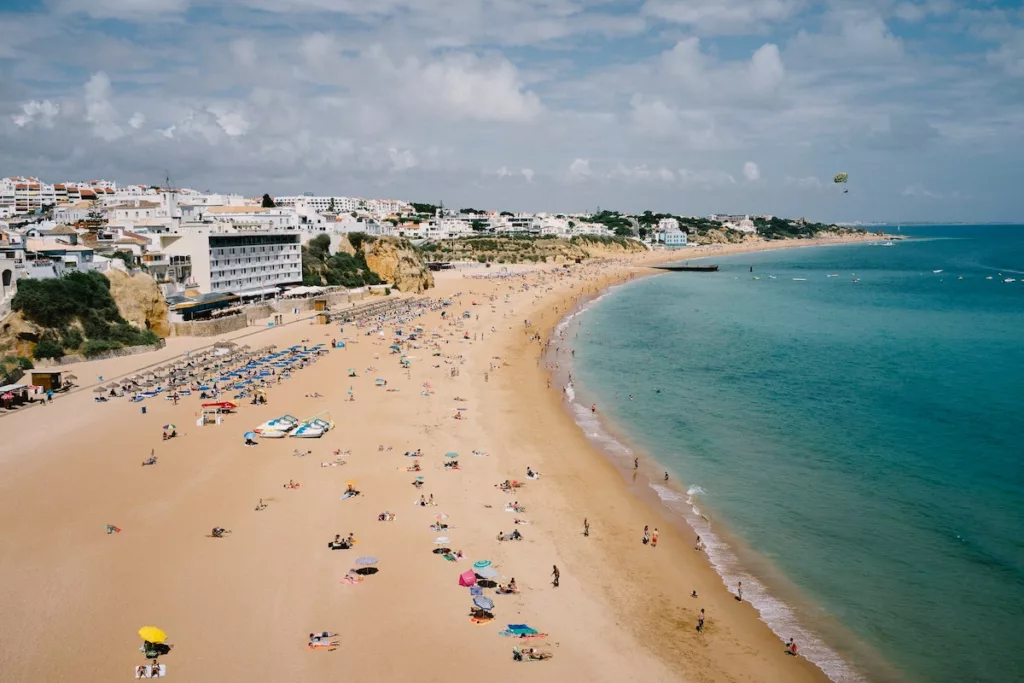
Once a small fishing village, Albufeira (“A castle by the sea” in Portuguese) is now one of the renowned beach towns in Portugal and a great place to relax. The main reason for visiting Albufeira is its beautiful coast and developed infrastructure.
The best recreational spot is Peneca (Tunnel beach) in the old part of the town, and you must go through a tunnel in the rocks to get to the ocean. Also, there are about two dozen beaches in the neighborhoods of Albufeira, some marked with a Blue Flag sign.
Read also: How to get to the Algarve from Lisbon
What is good about Albufeira?
- A beautiful city, ideal for walking for hours
- Excellent tourist infrastructure
- The central beach is large and comfortable (but could be crowded)
- Easily accessible from Lisbon and Faro
- Boat tour to the Algarve caves for dolphin watching
- Horseback riding
Some downsides to expect
- The prices have been up recently, and now it is one of the most expensive places in the Algarve region.
- It can be very touristy
- Not the best choice for relocation
- You may not like the number of drunk people
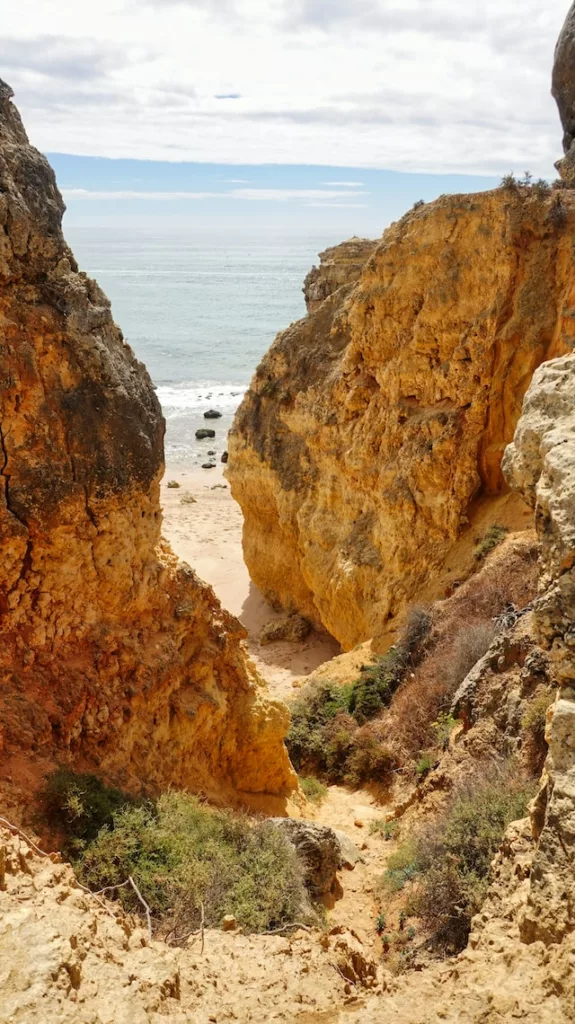
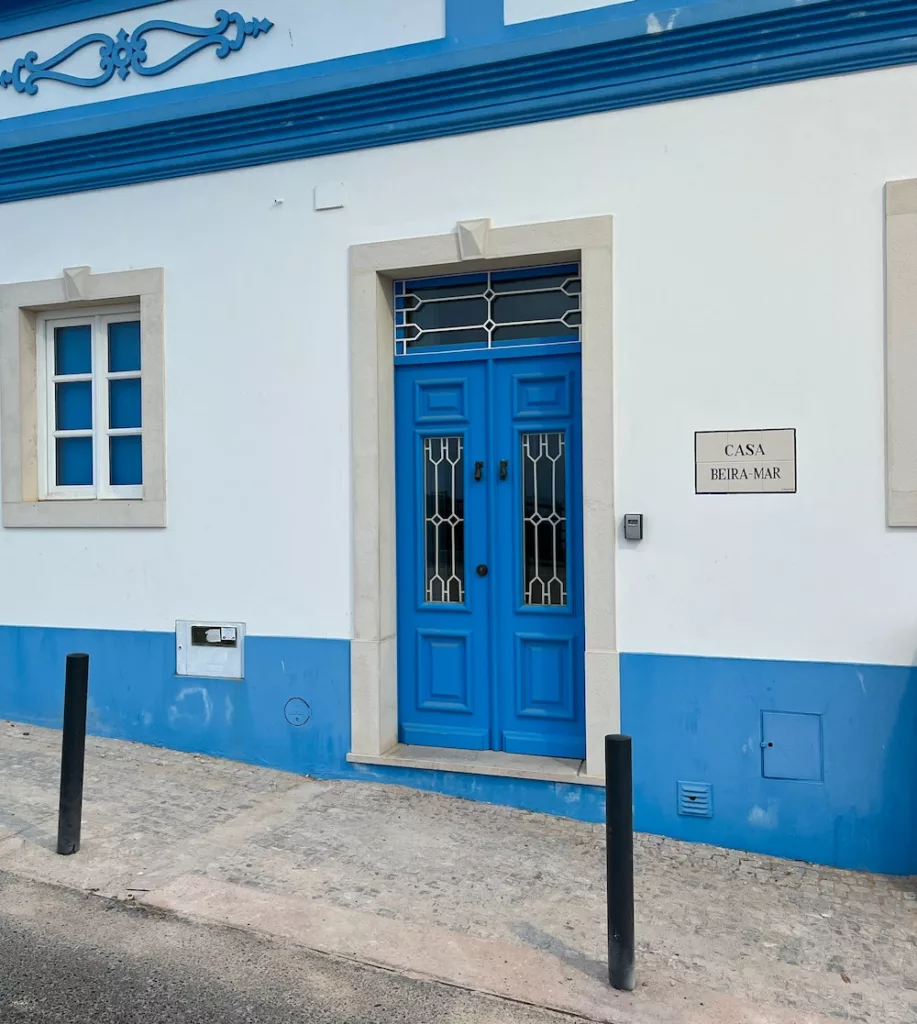
How to get to Albufeira
You can get to Albufeira from Lisbon by bus in 2 hours and 45 minutes. Alternatively, a train will take you to Albufeira in roughly 3 hours and a half.
Read also: Is Faro Worth Visiting? and Best Time to Visit Portugal
Funchal, Madeira
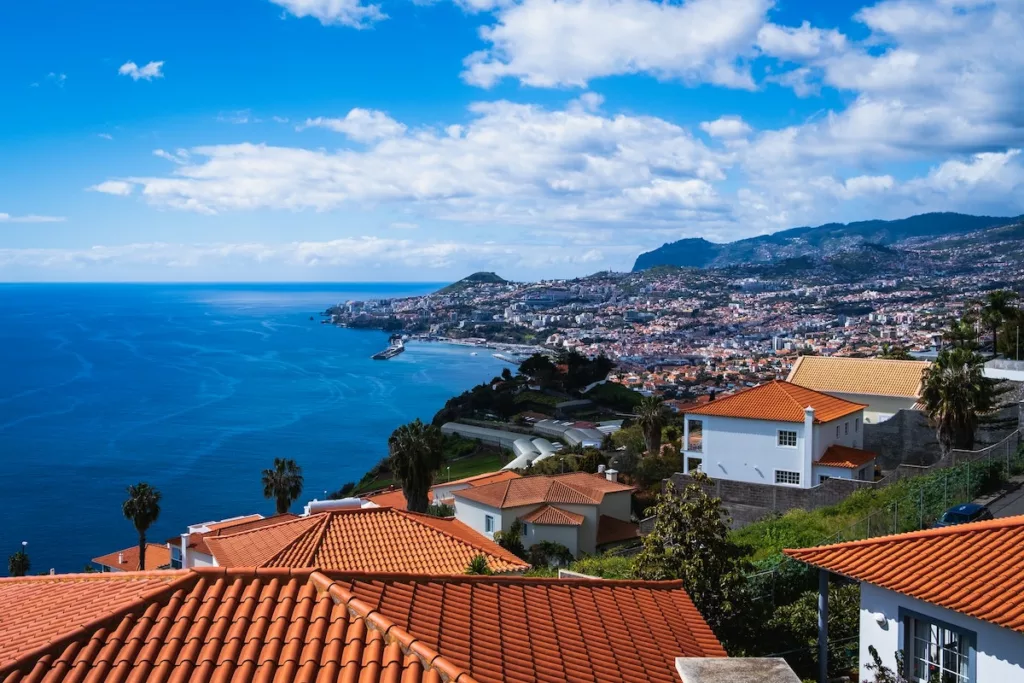
Funchal, the capital of Madeira, is an ideal destination for tourists and those looking to make a permanent move (there is quite a big nomad scene).
Located off the northwest coast of Africa in Portugal’s Autonomous Region of Madeira archipelago, Funchal offers fantastic weather year-round, with average temperatures ranging from 61°F (16°C) in winter to 79°F (26°C) during summer months.
What is good about Funchal?
- Super beautiful island if you are into nature, with lots of hiking trails
- Good opportunities for socializing
- Fabulous white sand beaches, with snorkeling and all kinds of hidden coves
- Wine tasting tours & wineries
- Fishing trips
- Luxury shopping opportunities
- Street markets with local produce
- Ideal for some day trips to Arco da Calheta and Prazeres
- Overall, one of the best QoL (Quality of Life) places in Portugal
Some downsides
- There is one – the distance from major cities
How to get to Funchal?
Going to Funchal is easy since most major cities have direct flights headed toward nearby Santa Cruz Airport, less than 15 miles from downtown (Lisbon, Porto, Amsterdam). From Lisbon, it will take roughly 4 hours to get to Funchal (1 hour and 50 minutes of flight time and a couple of hours of all-that-airport-stuff-you-know).
Ericeira
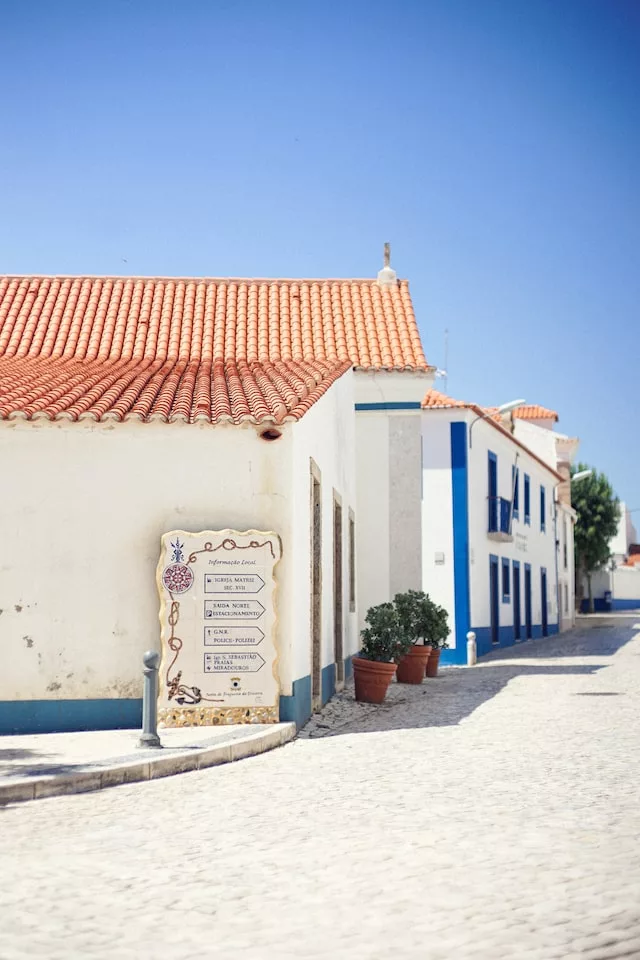
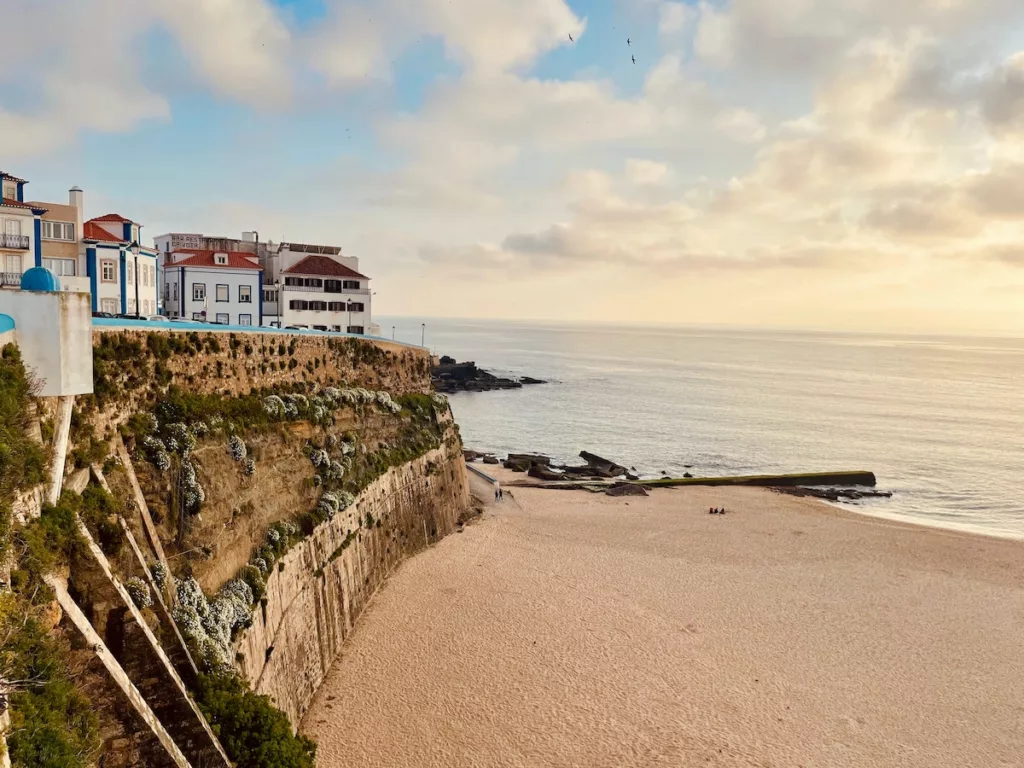
Ericeira is a charming beach town in the Municipality of Mafra, just 19 miles (30 km) west of Lisbon.
This sleepy fishing village became a tourist destination thanks to its beautiful beaches and surfing spots. It was even declared as Europe’s first World Surfing Reserve back in 2011.
What is good about Ericeira?
Besides beaches, there are plenty more things to do:
- Shopping and exploring local cuisine at outdoor markets such as “Mercado da Vila”
- Local music festivals
- Beautiful dramatic cliffs
- One of the best surfing spots in Portugal
- Lots of beautiful beaches and sights
- Surfers only: The beaches have riff breaks
- Digital nomads scene
- Vibrant nightlife
Some downsides
- It can be touristy in August
Ericeira offers some stunning coastal real estate options if you want to settle down – from secluded villas to close-to-town convenience.
How to get to Ericeira
You can get to Ericeira from Lisbon by bus in 1 hour and 45 minutes. If you rent a car, it will take only 40 minutes to get to the city.
Setúbal
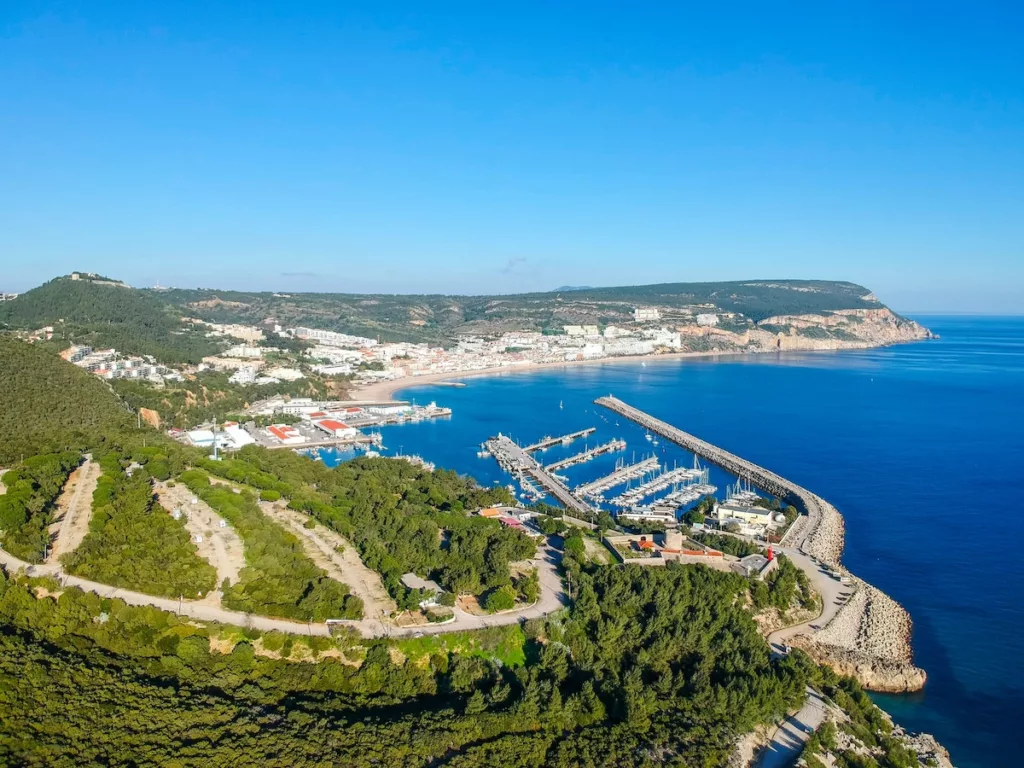
Setúbal is a Portuguese city located 31 miles (50 km) south of Lisbon. Positioned at the mouth of the Sado River, it is one of the best beach towns in Portugal and an ideal place to visit or stay long-term.
Although traditionally known as a fishing village, Setúbal offers much more than seafood. You will explore historical monuments and well-preserved fortifications from the World War II era and take breathtaking views of the surroundings.
What is good about Setúbal?
- Close access to some of the best beaches in Portugal
- The cuisine! The city is known for its fried fish, “Choco Frito,” and sardines
- Tróia Beach for volleyball and kitesurfing
- Serra de Arrábida Natural Park
- Perfect for hiking or mountain biking
- Mercado do Livramento
- The Church of the Monastery of Jesus
- Go for a wine tour and sample Moscatel de Setubal, a delicious dessert wine
- Real estate prices are far from Lisbon’s levels
- Close proximity to Lisbon
Some downsides
- Lack of job options
- Fewer school choices
How to get to Setúbal from Lisbon
By train
- Departs: Lisbon Campolide
- Arrives: Setúbal
- Shortest travel time: 49 minutes
By bus (Rede Expressos)
- Departs: Lisbon Sete Rios
- Arrives: Setúbal
- Shortest travel time: 45 minutes
Cascais
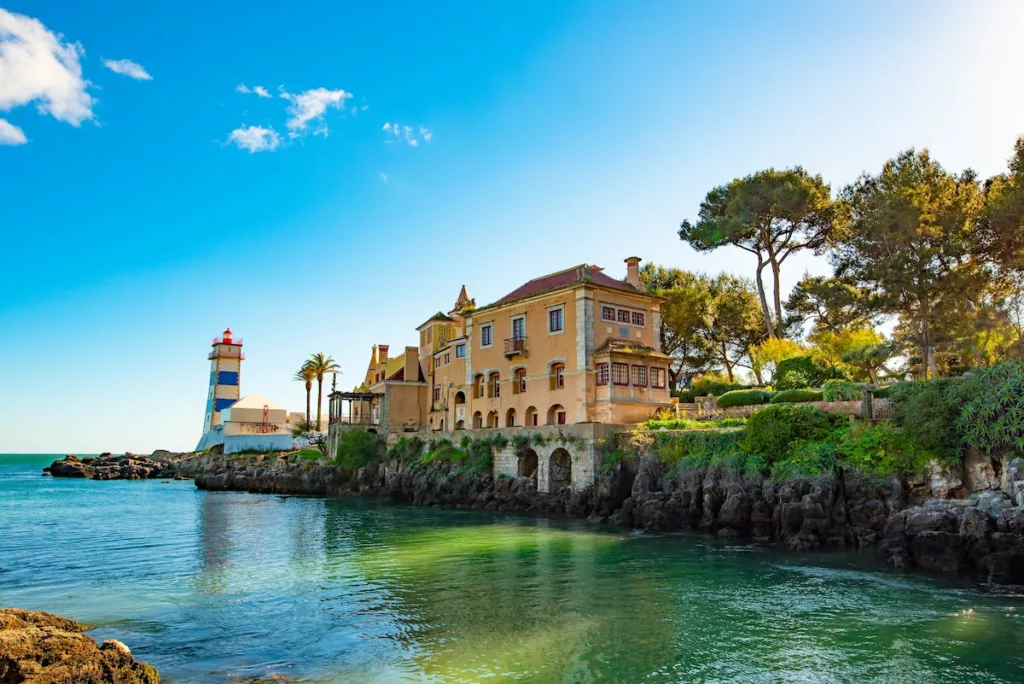
Cascais is a charming coastal town on the Atlantic coast, about 17 miles (27 km) west of Lisbon. It is a great place to visit if you are looking for a mix of history, culture, and beach leisure. It is definitely more laid-back and relaxing than Lisbon.
What is good about Cascais?
- One of the best things about Cascais is that it has some of the most beautiful beaches in Portugal: Praia do Guincho, Praia da Conceição, Tamariz, and Praia da Poça. Helpful tip: You can get to Guincho beach by bike. The bike path is separated from the road and is quite a safe and pleasant trip.
- The history and architecture (Cascais Citadel, Boca do Inferno).
- The thriving food scene, with various local restaurants serving fresh seafood, grilled fish, and meat dishes.
- The big international community, schools
- Paula Rego House of Stories museum (Casa das Histórias Paula Rego)
Some downsides
- It can be quite crowded in the peak season.
- Prices for accommodation and dining can be quite high.
- Windy weather in winter.
How to get to Cascais from Lisbon
By train (line 19001)
- Departs: Lisboa-Cais Do Sodre
- Arrives: Cascais
- Shortest travel time: 40 minutes
By car
- Shortest travel time: 23 minutes
Lagos
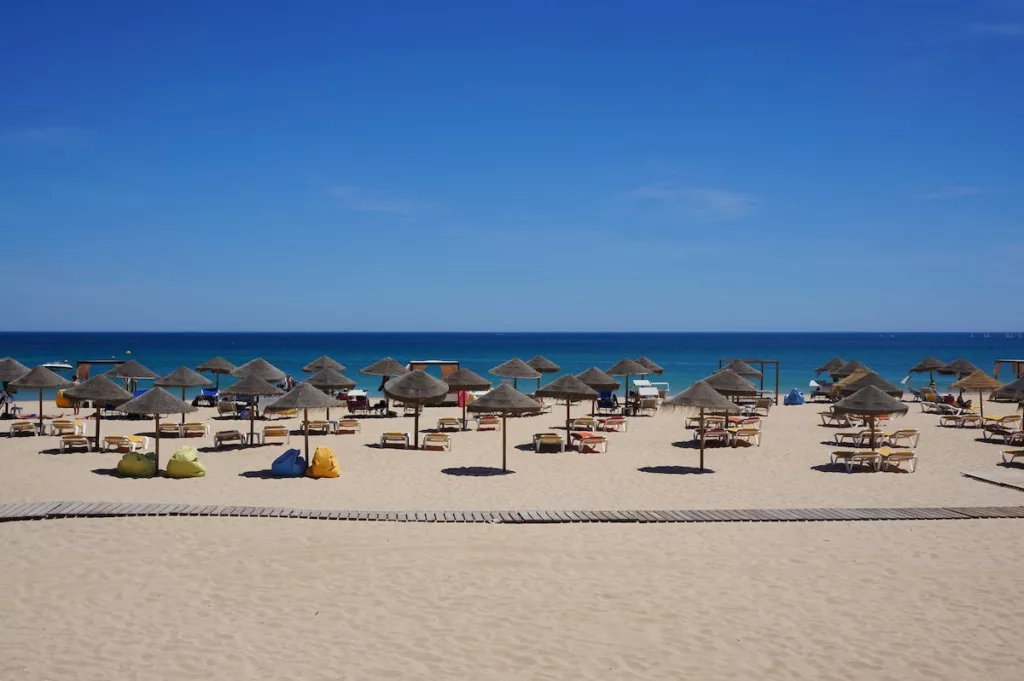
Lagos is an enchanting seaside town on the Atlantic coastline in the south of Portugal. The city has a rich history and culture, surrounded by stunning natural beauty with spectacular beaches. It is the ideal destination to enjoy both relaxation time at the beach or explore the natural wonders.
The good things about Lagos
- Idyllic views from multiple lookout points
- Quaint cobblestone streets in the historic center
- Variety of beautiful white sand beaches(Praia da Dona Ana, Meia Praia)
- Perfect for outdoor activities such as hiking, sailing, and surfing
- Ponta da Piedade (Point of Mercy), a stunning coastal spot near the town
Some downsides
- The farthest beach town from Lisbon and Faro airport
- Higher cost than other towns in the Algarve region
- Heat can be intense during the summer months.
- It can feel very touristy/crowded/party-town during July/August.
- Water temperature is quite cold until mid-summer as Lagos is in the very west of Portugal. Hence, the ocean water temperature is 1-2 degrees cooler than in Albufeira in the east.
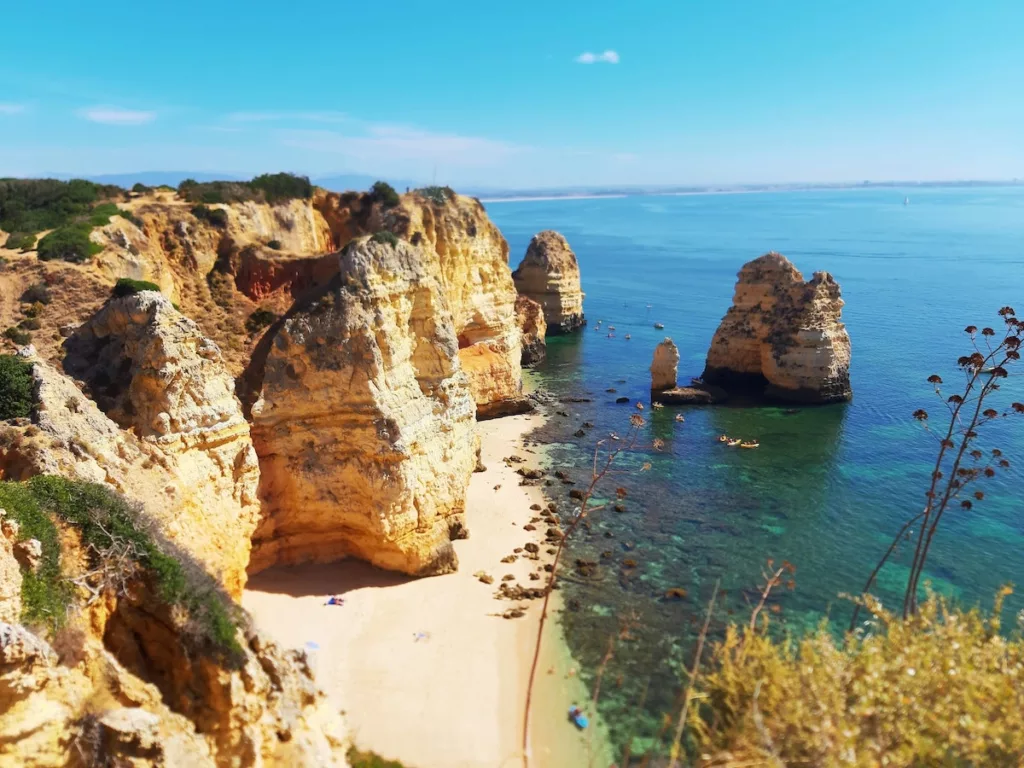
The beaches of Lagos
Praia da Dona Ana
It is the most picturesque beach in town, around a 25-minute walk from the city center. The beach can be quite crowded, but you can always find a quiet place near the cliffs. The facilities: sunbeds, umbrellas, showers, toilets, lifeguards, and parking.
Meia Praia
Within a 10-minute drive, you will find another beautiful long beach.
It is not a typical Portuguese beach; there is only sand and ocean. Tourist infrastructure is quite developed – sunbeds, umbrellas, and cabins for changing, but there are no showers or toilets. The parking is easy.
Camilo Beach
The place is beautiful but crowded. Sunbeds, umbrellas, restrooms, and cafes. The distance from the city center is about 6 miles (10 km), so staying in a hotel near the beach is better.
Praia do Porto de Mos
It is a spacious, quiet spot for a relaxing vacation, with a vast sand stretch and cliffs. The ocean is almost always calm, as the area is enclosed by rocks. Besides typical beach facilities and two nearby restaurants, there is also a comfortable pedestrian trail on the top of the cliffs to admire the panoramic scenery. The distance from the city center is about 1.8 miles (3 km).
How to get to Lagos from Lisbon
The most convenient way to get from Lisbon to Lagos would be a car rental since plenty is available around all major cities, including Lisbon Airport (LIS). Alternatively, you can take one of several daily trains that depart directly from Rossio Train Station near downtown Lisbon. The train will bring you to central Lagos station after about 4 hours of journey time.
Comporta
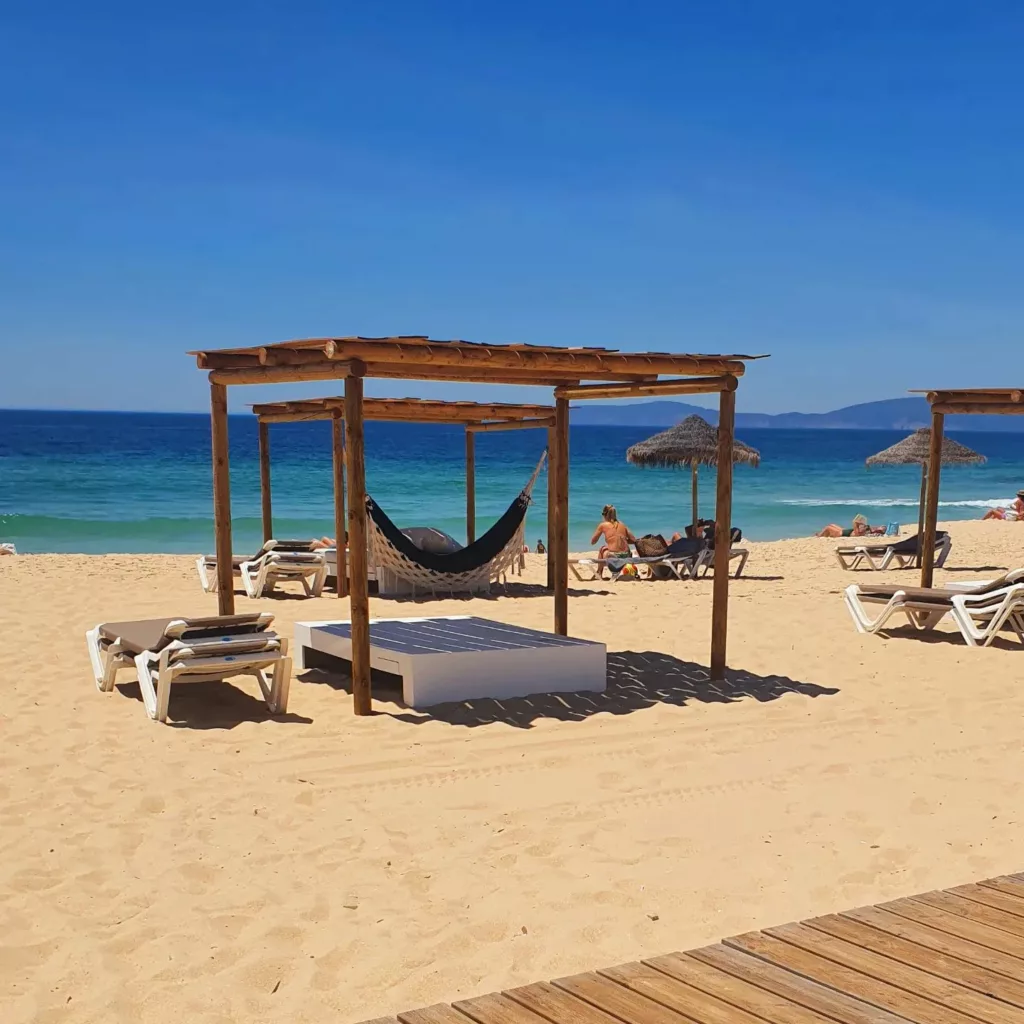
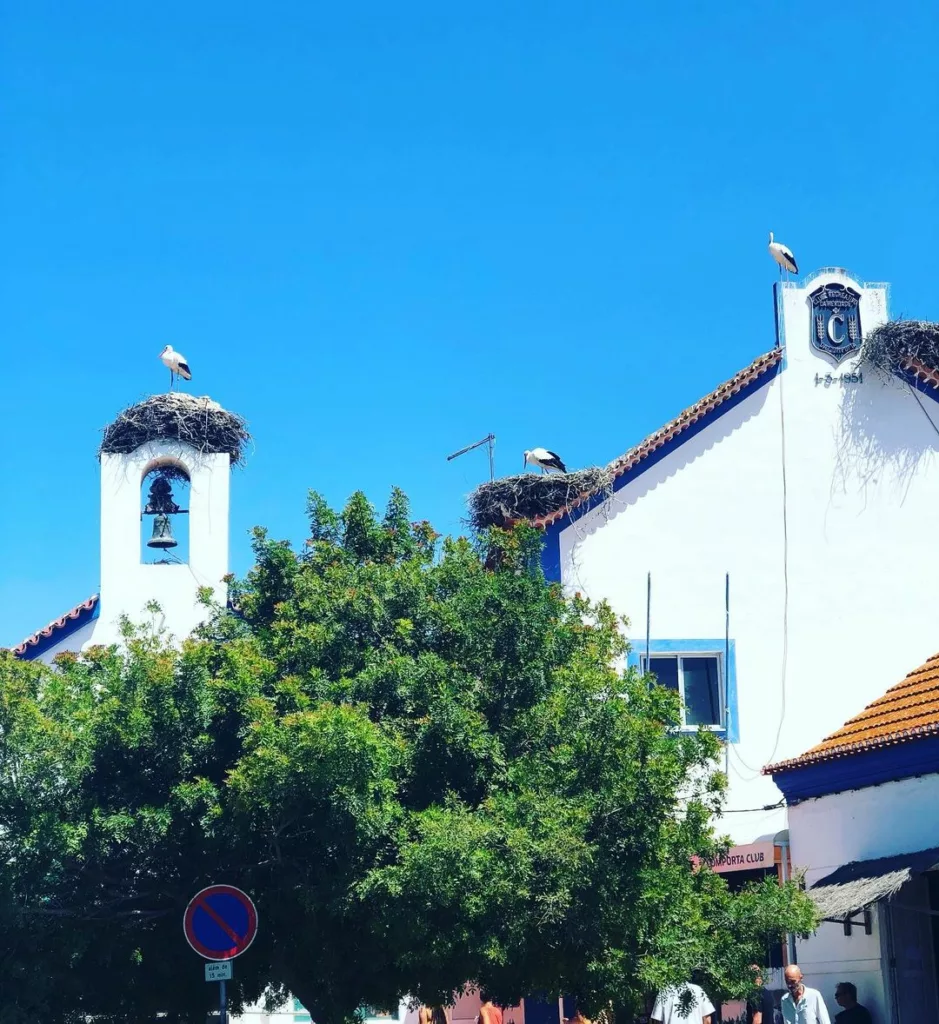
Comporta is a charming and tranquil village (a former fishing parish) with a fantastic beach. It is located south of Lisbon, near Setúbal.
The good things about Comporta
- Miles of sandy white beaches
- An abundance of nearby nature reserves
- Delicious local cuisine made from fresh seafood. You should definitely eat in “A Escola” restaurant, one of Portugal’s best typical southern restaurants. Another dining option is “O Tobias,” especially if you like seafood.
- Slow-paced lifestyle with plenty of leisure activities like yoga classes, dolphins watching tours, horse riding, and bike rentals
- It is close to the Troia peninsula, with a casino, golf courses, shops, and a marina.
Some downsides
- Many seasonal visitors lead to overcrowding during summer
- Limited nightlife options if you are looking for more than relaxed dinners over sunset views
- Mosquitos
How to get to Comporta from Lisbon
If you are traveling from Lisbon, there are several ways to get to Comporta:
- By car: 1 hour and 20 minutes, including car ferry
- By train: 40 minutes, from Campolide to Setúbal, then the car ferry
Portimao
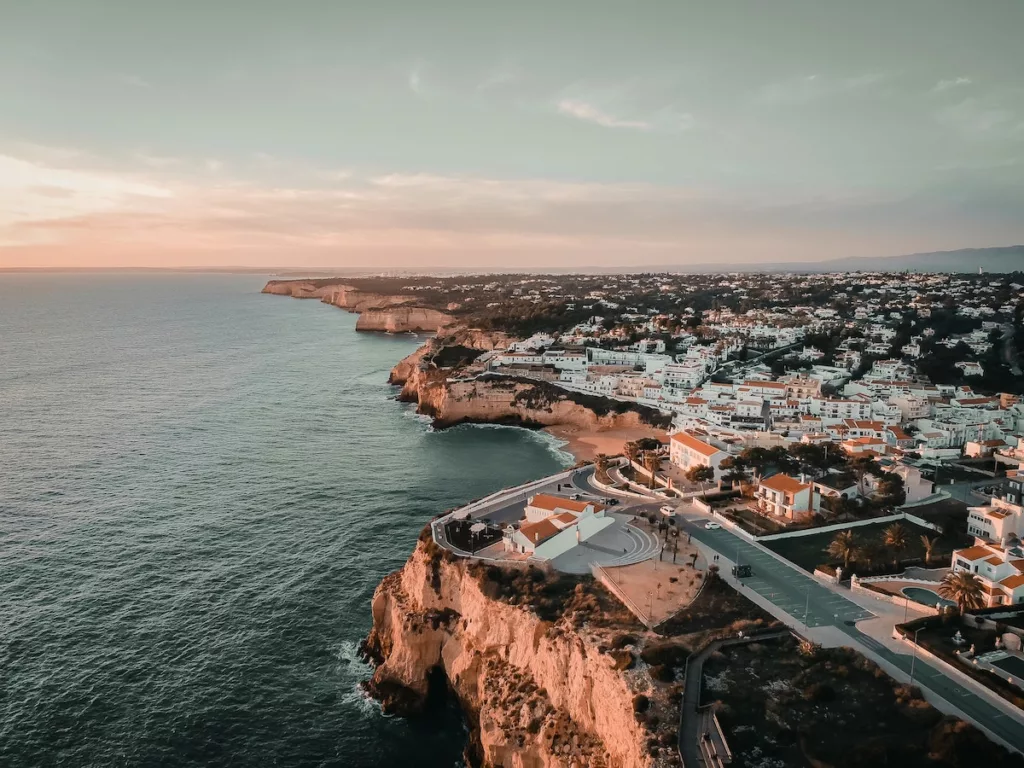
It is a stunning port city in the Algarve region. It is known for its picturesque old quarter, marina, and nearby beaches.
Beaches in Portimao
Undoubtedly, the main attraction of the resort is Praia da Rocha. This place is on the best European beaches and vacation spots list. There are wooden walkways along the beach, changing rooms, and showers (in the cafe).
Another famous beach, Three Castles beach, is nearby, separated from Praia Da Rocha by a rock.
Moreover, a bit farther, there is a stunningly beautiful Three Brothers beach (Praia dos Três Irmãos), a secluded spot with caves and rocks.
The good things about Portimão
- Picturesque cliffs and a vast Praia da Rocha beach, with enough room for everyone, even in high season.
- Well-developed infrastructure. There is everything for a comfortable stay.
- Excellent conditions for sports – golf, diving, windsurfing, yachting, and deep-sea fishing.
- It is convenient to visit neighboring towns and natural attractions in the Algarve region. In either direction, the trip will take little time.
- The main thing about visiting Portimao is not staying in the town but exploring the coastal area of the Algarve.
Some downsides
- The waves are almost always big, so there are better places for a holiday with small children
- Poorly communicated with major cities
- A bit of a boring place
How to get to Portimao from Lisbon
By train
- Departs: Lisbon-Entrecampos
- Arrives: Portimao
- Shortest travel time: 3 hours and 16 minutes (with one change in Tunes)
By bus (Rede Expressos)
- Departs: Lisbon Sete Rios
- Arrives: Portimao
- Shortest travel time: 3 hours and 15 minutes
By car
- 2 hours and 40 minutes, with an approximate fuel cost of $50–$70
Sagres
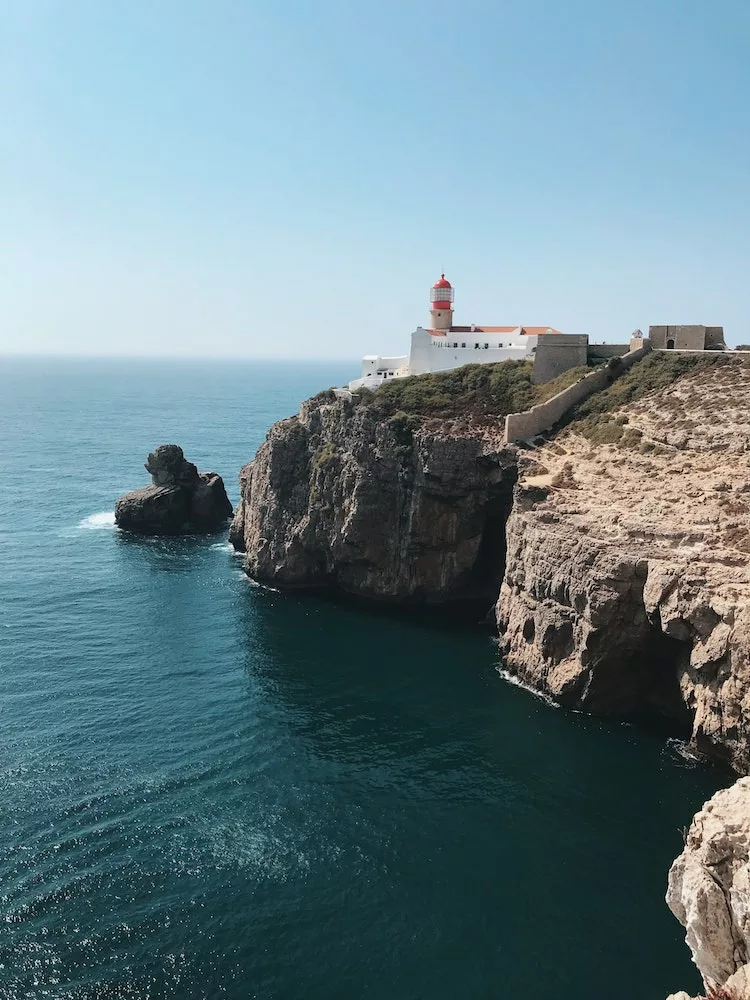
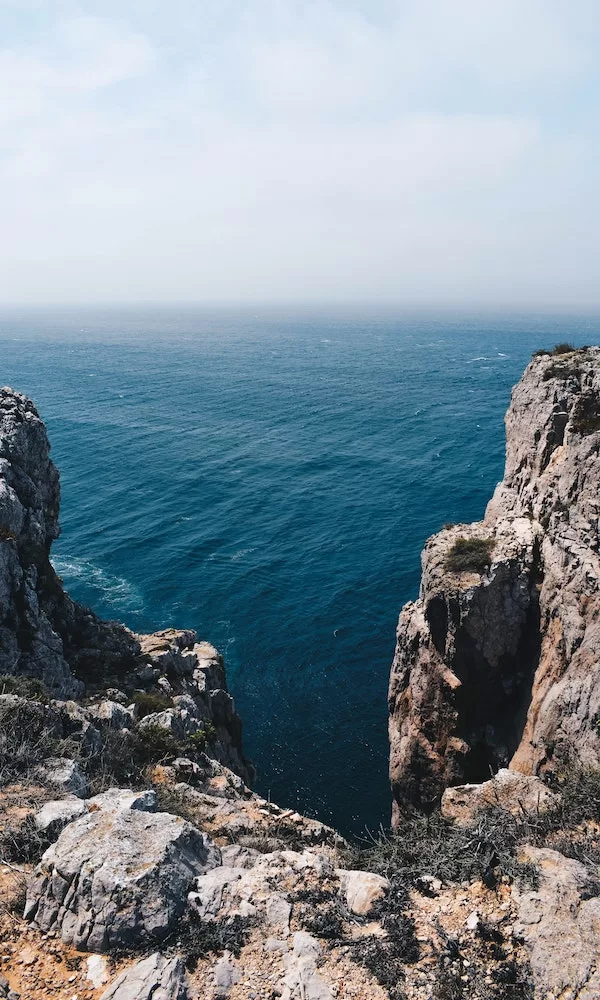
Sagres is a quiet and historically significant town located in the southwestern corner of continental Europe.
It dates back to prehistory when it was considered a gathering place for gods, and people practiced sacrificing animals for them.
In the 15th century, Prince Henry the Navigator set up a school for navigators. Sailors came here to learn everything they needed for world exploration, including shipbuilding, mapmaking, navigation, and languages. That helped Portugal become one of the leading countries during the Age Of Discovery period and the slave trade period.
Sadly, Sir Francis Drake destroyed part of Sagres’ fortress while attacking it in 1587!
Today you can easily reach this picturesque destination from Faro airport within just 1 hour and 20 minutes or use buses/trains if preferred – making Sagres definitely worth visiting!
The good things about Sagres
- Beautiful beaches, such as Carrapateira and Murração.
- Three Little Birds restaurant
- Tasty seafood rice (“Arroz de Marisco”) in the nearby village, Vila do Bispo
- Astonishing sunset. The locals call it “The end of the world.”
- The 15th-century fort, the lighthouse, and the scenic viewpoint.
Some downsides
- The air is windy and cooler than the rest of the Algarve
- There is not much to do, so I recommend staying at most 1-2 days.
How to get to Sagres from Lisbon
By bus (Rede Expressos)
- Departs: Lisbon Sete Rios
- Arrives: Sagres
- Shortest travel time: 4 hours and 15 minutes
By car
- 3 hours and 20 minutes, with an approximate fuel cost of $60–$80
Alvor
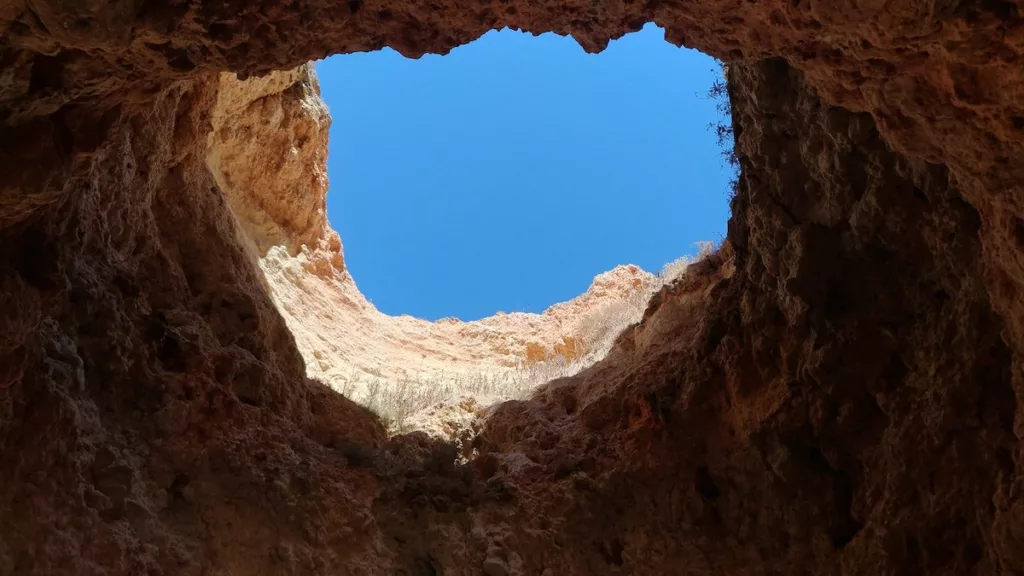
It is a small town 3 miles (5 km) from Portimão on a fishing village site (that was almost destroyed by the earthquake in 1755). Alvor is a favorite vacation spot not only for tourists but also for the Portuguese.
The good things about Alvor
- The beach is easily accessible and is within a walking distance
- Ria de Alvor National Natural reserve
- Golf courses
- The lovely old town with a 16th-century whitewashed church
- Sandy beaches with calm waters – perfect for families with children. Sunbeds, umbrellas, and other facilities.
- Overall, it is an excellent destination if you are looking for a mix of history, culture, and delicious food.
Some downsides
- Compared to other ocean vacation spots in Portugal, Alvor is a little less picturesque – there are no steep cliffs.
- Not much to do. You can get around everything in a day.
How to get to Alvor from Lisbon
By bus (RenEX)
- Departs: Lisbon Sete Rios
- Arrives: Alvor
- Shortest travel time: 3 hours and 45 minutes
By car
- 2 hours and 50 minutes, with an approximate fuel cost of $50–$70
Nazaré
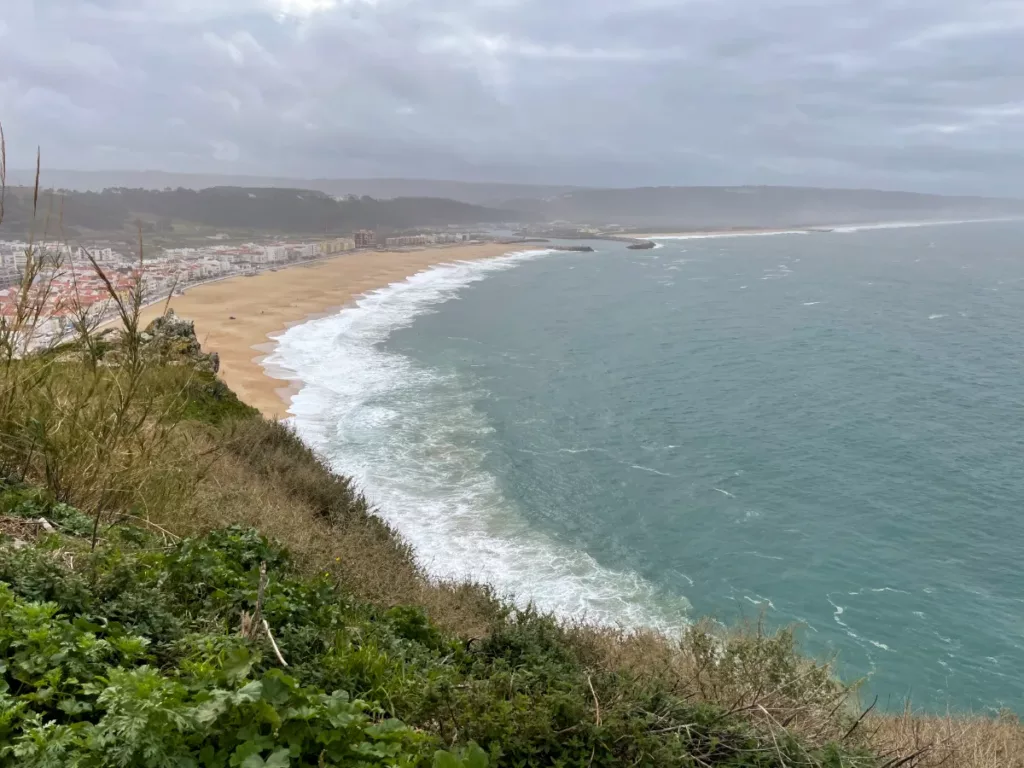
If you have not watched The 100 Foot Wave documentary yet, I recommend you do that as soon as possible. Okay, here is the trailer, so you can see what Nazare is about:
Besides gigantic waves, Nazare is a typical small town in Portugal. It has a long beach framed by mastodon rocks, some ancient sights, and charming fish restaurants.
What is good about Nazare
- Waves and surfers (best views in winter months and off-season)
- The old cable car to Sitio.
- The local fish restaurants.
- Romantic walks along the beachfront (especially the northern one)
- Sunsets
- Beautiful villages nearby, such as Batalha, Alcobaça, and Óbidos
- Percebes! The most expensive seafood on Earth.
Some downsides
- There is not much to do
- Not for typical beach leisure
How to get to Nazare from Lisbon
By train
- Departs: Lisbon-Entrecampos
- Arrives: Valado de Frades
- Shortest travel time: 2 hours and 6 minutes. Get off at Valado de Frades, about 3 miles (6 km) from the village. Then take a taxi.
By bus (Rede Expressos)
- Departs: Lisbon Sete Rios
- Arrives: Nazare
- Shortest travel time: 1 hour and 50 minutes
By car
- 1 hour and 18 minutes, with an approximate fuel cost of $20. Take the A8 road.
Tavira
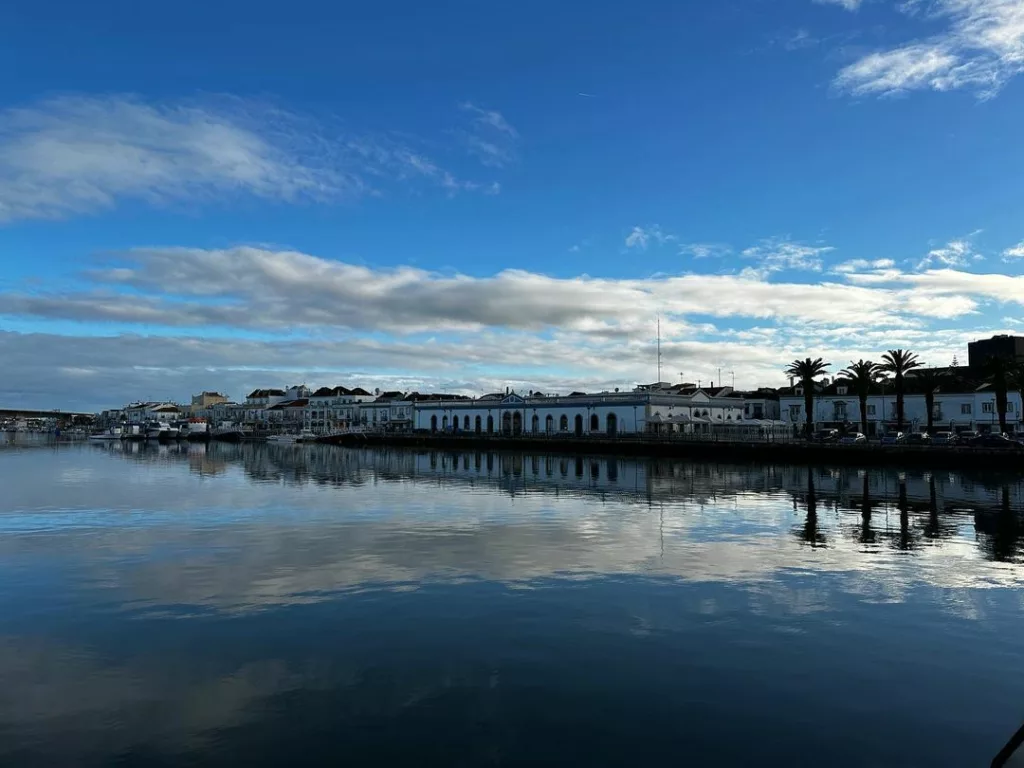
Tavira is a small cozy town on the coast of the Algarve region to the east of Faro. The highlights of Tavira – an ancient Roman arch bridge and Moorish castle. There are also wide golden sandy beaches and a beautiful island of the same name.
One of the essential features of Tavira is the absence of a large number of tourists. The city somehow managed to avoid the tourist boom even though it is considered one of the most beautiful places on the Algarve coast.
What is good about Tavira
- Pleasant weather throughout the year, as always, in the Algarve
- Swimming and scenic walks in the summer.
- Nice restaurants
- Bike lanes along the river
- Carnival in February, Easter parade in April, and gastronomic seafood festival in May.
- The island of the same name, Tavira. It is a strip of sand 5 miles (8 km) long and only 1,300 feet (400 m) wide. And it is so beautiful!
- Ria Formosa Reserve, located a short distance from Tavira. There are 17 hectares of ponds and islands inhabited by herons, flamingos, turtles, and chameleons.
Some downsides
- Mosquitos
How to get to Tavira from Lisbon
By train
- Departs: Lisboa-Entrecampos
- Arrives: Tavira
- Shortest travel time: 3 hours and 39 minutes, with one change (in Faro).
By bus (Rede Expressos)
- Departs: Lisbon Sete Rios
- Arrives: Tavira
- Shortest travel time: 3 hours and 45 minutes
By car
- 2 hours and 25 minutes, with an approximate fuel cost of $52-74.
Beach Towns in Portugal FAQ
Places like Cascais near Lisbon and Lagos or Alvor in the Algarve are great for families due to their safe beaches and family-friendly activities. You can also take a closer look at Lagoa with its Slide & Splash waterpark (don’t confuse with Lagos).
Ericeira (not for beginners), Torres Vedras, Costa da Caparica (a short bus ride from Lisbon), and Peniche are renowned worldwide for their excellent surfing conditions. If you’re really into that, take a closer look at Nazaré, which is well-known for the “monster” waves due to its unique underwater topography. But don’t be scared, the other part of the beach is a beginner-friendly zone.
While it’s not strictly correct to label any Portuguese town as “British,” there are several towns in Portugal popular among British tourists and expats, which may give them a more “British” feel. One of these is Albufeira in the Algarve region.
However, it’s worth mentioning that despite these British influences, Albufeira and other similar towns retain their unique Portuguese character and culture.
Not really. Lisbon doesn’t have natural beaches. However, it is surrounded by several beautiful beach areas that are easily accessible within a day trip. Some of the popular ones include: Costa da Caparica, Carcavelos Beach, Praia da Adraga (in Sintra region), and Guincho Beach (in Cascais).
Tavira in the Algarve and Vila Nova de Milfontes in the Alentejo region are relatively off the beaten track but offer beautiful beaches and a relaxed atmosphere.
